
I’ve long wondered what the U.S. Defense Department Ballistic Missile Defense System’s Sea-based X-band Radar (SBX-1) vessel was like close-up whenever it docked its massive frame in Pearl Harbor. The SBX-1 is a semi-submersible self-propelled, mobile radar station designed to operate in high winds and heavy seas. Today, I got the chance to find out thanks the efforts of Honolulu-based technologist and radio show host Burt Lum and the hospitality of the U.S. Navy and U.S. Defense Department Ballistic Missile Defense System. Eleven people were allowed to tour the ship and learn more about our occasional visitor. You can see a lot of what I saw in the 25 photos posted here. You can click on any of the photos to see it in full resolution.
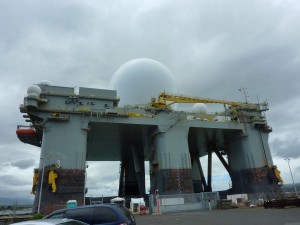
When docked, this massive vessel is easily seen from the highways and overpasses near Pearl Harbor. We were told it is roughly the width and height of an Enterprise class aircraft carrier and about a third of the length (240 feet wide, 390 feet long, and 280 feet high). It carries 1.8 million gallons of diesel fuel.

U.S. Army Lt. Col. Braddom, Product Manager for the SBX-1, conducted the tour for our group. I asked why an Army officer was assigned the ship and was told the SBX-1 is part of the Missle Defense System (MDS) – not the Navy. In fact, I was struck by the fact that I didn’t see any Naval or Marine personnel on the ship. The SBX-1 technical staff (Raytheon) and ship’s crew are civilian contractors.

As our tour began, I spent some time looking at the 151 steps that we needed to climb to get to the platform above.


We were able to spend some time looking around the ship before making the climb up the 151 step staircase.

Then, it was time to board the SBX-1 and take a look around.

When at sea, the water comes up to the area near the line defined by white and gray painted areas.

The giant white sphere is called a radome and is supported just by air pressure. It weighs 18,000 pounds, stands more than 103 feet high, and measures 120 feet in diameter. It is designed to survive winds in excess of 130MPH.

We were not allowed to take cameras into the dome. However, the photo above from the MDA’s A Brief History of the Sea-based X-band Radar 1 (PDF) gives you an idea of what our group saw. This photo does not convey the huge size of the radar array which stand several stories high inside of the radome.
Approximately 45,000 transmit/receive modules in the radar operate together to form the radar beam, which is capable of seeing an object the size of a baseball at a distance of 2,500 miles. Each module consists of the final transmit stage and initial receive stage from each antenna element. The radar also uses 69,632 multi-sectional circuits to transmit, receive, and amplify signals.
We had to remove most things that might be dropped before entering the radome (keys, wallets, etc.). Fortunately, eyeglasses were allowed.

We were able to take a good look around the SBX-1’s bridge. However, we were advised not to sit in the Ship Master’s chair



Anyone on the bridge has one heck of a view.


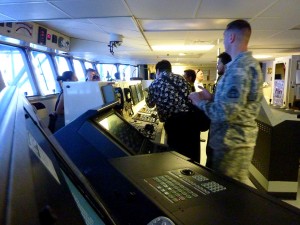
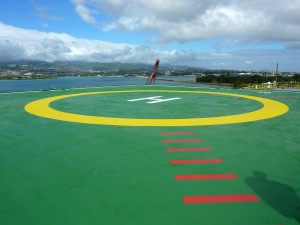
One of the literal highlights of the tour was standing on the SBX-1’s helipad and getting a great view of the area around Pearl Harbor.
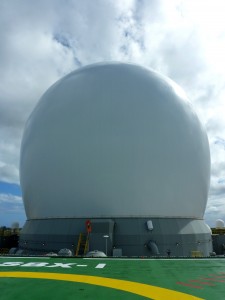
And, of course, we got closer view of the outside of the radome.


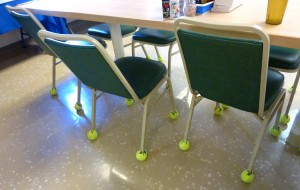
Tennis balls were attached to the feet of all of the chairs in the cafeteria.


Finally, after a great tour of an amazing work of mobile technology, it was time to walk down the 151 steps.
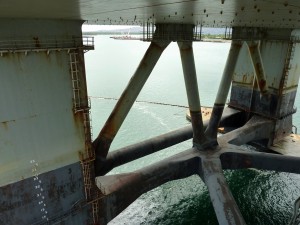

Comments
3 responses to “Photos from a visit to the Missile Defense Agency’s Sea-based X-band Radar Vessel”
Neat
[…] Todd Ogasawara – Photos from a visit to the Missile Defense Agency’s Sea-Based X-Band Radar Vessel […]
Todd, cool that you got the opportunity to tour this thing. Puts you in a pretty small club.